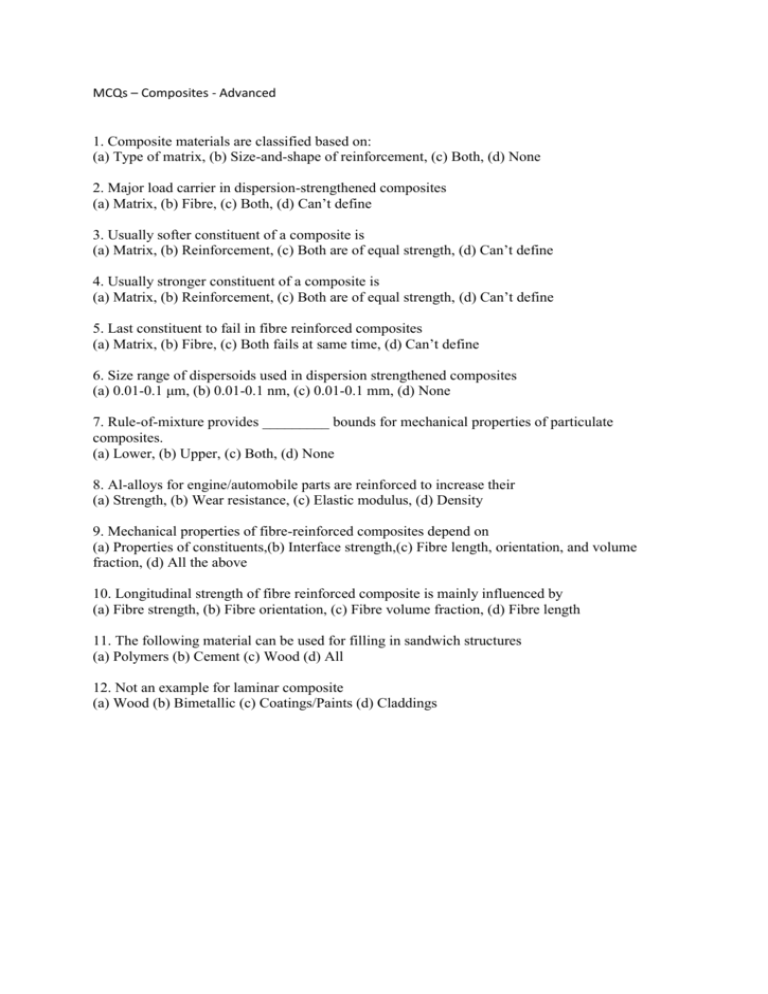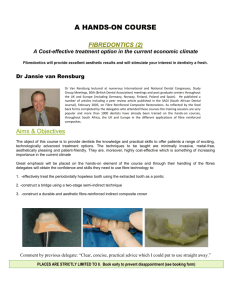Composite-Advanced-MCQs
advertisement

MCQs – Composites - Advanced 1. Composite materials are classified based on: (a) Type of matrix, (b) Size-and-shape of reinforcement, (c) Both, (d) None 2. Major load carrier in dispersion-strengthened composites (a) Matrix, (b) Fibre, (c) Both, (d) Can’t define 3. Usually softer constituent of a composite is (a) Matrix, (b) Reinforcement, (c) Both are of equal strength, (d) Can’t define 4. Usually stronger constituent of a composite is (a) Matrix, (b) Reinforcement, (c) Both are of equal strength, (d) Can’t define 5. Last constituent to fail in fibre reinforced composites (a) Matrix, (b) Fibre, (c) Both fails at same time, (d) Can’t define 6. Size range of dispersoids used in dispersion strengthened composites (a) 0.01-0.1 μm, (b) 0.01-0.1 nm, (c) 0.01-0.1 mm, (d) None 7. Rule-of-mixture provides _________ bounds for mechanical properties of particulate composites. (a) Lower, (b) Upper, (c) Both, (d) None 8. Al-alloys for engine/automobile parts are reinforced to increase their (a) Strength, (b) Wear resistance, (c) Elastic modulus, (d) Density 9. Mechanical properties of fibre-reinforced composites depend on (a) Properties of constituents,(b) Interface strength,(c) Fibre length, orientation, and volume fraction, (d) All the above 10. Longitudinal strength of fibre reinforced composite is mainly influenced by (a) Fibre strength, (b) Fibre orientation, (c) Fibre volume fraction, (d) Fibre length 11. The following material can be used for filling in sandwich structures (a) Polymers (b) Cement (c) Wood (d) All 12. Not an example for laminar composite (a) Wood (b) Bimetallic (c) Coatings/Paints (d) Claddings











